Scientists at the US National Aeronautics and Space Administration (NASA) say they have come up with a simpler way to find planets that might support life.
The new model helps allocate scarce observing time to the most promising candidates, according to new research published in the Astrophysical Journal.
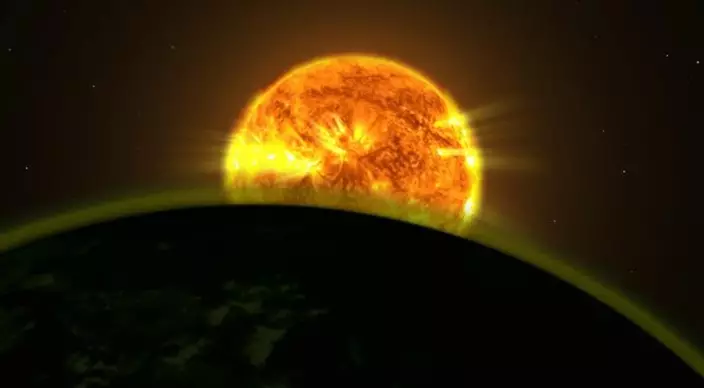
A star's light illuminating the atmosphere of a planet. /NASA Photo
"Using a model that more realistically simulates atmospheric conditions, we discovered a new process that controls the habitability of exoplanets and will guide us in identifying candidates for further study," said Yuka Fujii of NASA's Goddard Institute for Space Studies (GISS), lead author of the study, in a statement.
NASA has been hot on the trail of Earth-like planets.
Previous studies were forced to rely on one-dimensional and vertical models to simulate atmospheric conditions. The new research uses a model that calculates conditions in all three dimensions, allowing scientists to simulate the circulation of the atmosphere and the special features of that circulation, which one-dimensional models cannot do, according to NASA.

Liquid water is essential to life as we know it. If the temperature of an alien world allows liquid water to be present for sufficient time to allow life to thrive, it is considered potentially habitable. If a planet is too distant from its star, its surface water will freeze; if it is too close, its surface water will evaporate and be lost to space.
This happens when water vapor rises to a layer in the upper atmosphere called the stratosphere and gets broken into its elemental components, hydrogen and oxygen, by ultraviolet light from the star. The extremely light hydrogen atoms can then escape to space.
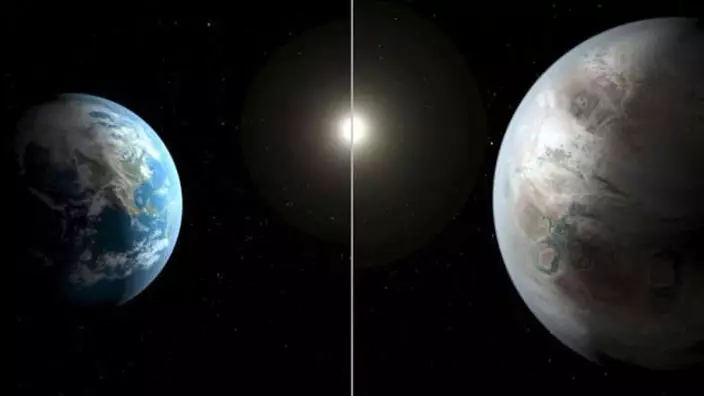
An illustration compares Earth to a planet beyond the solar system that is a close match, called Kepler-452b. /NASA Photo
Planets in the process of losing their oceans this way are said to have entered a "moist greenhouse" state because of their humid stratospheres.
For exoplanets orbiting close to their parent stars, the team found that the near-infrared radiation (NIR)-driven process could increase moisture in the stratosphere gradually. So, it is possible that an exoplanet closer to its parent star could remain habitable, contrary to old model predictions.
The new approach demonstrated that since these stars emit the bulk of their light at NIR wavelengths, a moist greenhouse state will result even in conditions comparable to or somewhat warmer than Earth's tropics, researchers say.
In the future, the team plans to vary those planetary characteristics, such as gravity, size, atmospheric composition and surface pressure to see how they affect water vapor circulation and habitability.
UNITED NATIONS (AP) — Russia and Ukraine on Monday traded blame before the United Nations Security Council for the attacks on Europe’s largest nuclear power plant, which the head of the International Atomic Energy Agency said have put the world “dangerously close to a nuclear accident.”
Without attributing blame, IAEA Director General Rafael Mariano Grossi said his agency has been able to confirm three attacks against the Zaporizhzhia Nuclear Power Plant since April 7.
“These reckless attacks must cease immediately,” he told the Security Council. “Though, fortunately, they have not led to a radiological incident this time, they significantly increase the risk … where nuclear safety is already compromised.”
The remote-controlled nature of the drones that have attacked the plant means that it is impossible to definitively determine who launched them, Grossi told reporters after the meeting.
“In order to say something like that, we must have proof,” he said. “These attacks have been performed with a multitude of drones.”
Zaporizhzhia sits in Russian-controlled territory in southeastern Ukraine and has six nuclear reactors.
Fears of a nuclear catastrophe have been at the forefront since Russian troops occupied the plant shortly after invading in February 2022. Continued fighting between Russian and Ukrainian forces — as well as the tense supply situation at the plant — have raised the specter of a disaster.
Ukraine and its allies on Monday again blamed Russia for dangers at the site, with the United States saying, “Russia does not care about these risks.”
“If it did, it would not continue to forcibly control the plant,” U.S. deputy ambassador Robert Wood told the Security Council, which met at the initiative of the U.S. and Slovenia.
Russia, for its part, said Ukraine was to blame for the attacks.
“The IAEA’s report does not pinpoint which side is behind the attacks,” Russia’s U.N. Ambassador Vassily Nebenzia said. “We know full well who it is.”
“Over the last few months, such attacks not only resumed,” Nebenzia said, “they significantly intensified.”
Ukraine’s ambassador to the U.N., Sergiy Kyslytsya, called the attacks “a well-planned false flag operation by the Russian Federation,” which he alleged Russia had designed to distract the world from its invasion of its neighbor.
The Zaporizhzhia facility is one of the 10 biggest nuclear plants in the world. Fighting in the southern part of Ukraine where it is located has raised the specter of a potential nuclear disaster like the one at Chernobyl in 1986, where a reactor exploded and blew deadly radiation across a vast area.
Neither Russia nor Ukraine in recent months has been able to make significant advances along the 1,000-kilometer (620-mile) front line crossing eastern and southern Ukraine. Drones, artillery and missiles have featured heavily in what has become a war of attrition.
Russia and Ukraine have frequently traded accusations over the Zaporizhzhia plant.
The most recent strikes did not compromise the facility, which is designed to withstand a commercial airliner crashing into it, the IAEA said.
The plant’s six reactors have been shut down for months, but it still needs power and qualified staff to operate crucial cooling systems and other safety features.
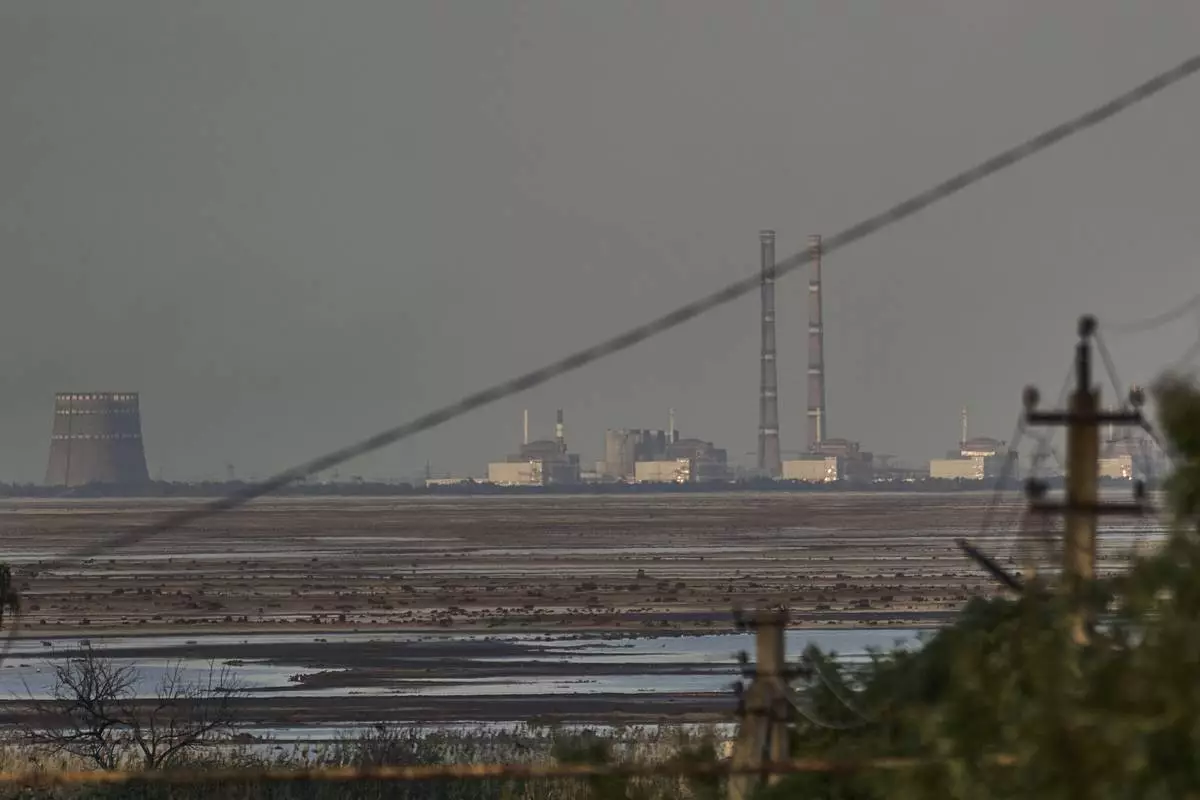
FILE - The Zaporizhzhia nuclear power plant, Europe's largest, is seen in the background of the shallow Kakhovka Reservoir after the dam collapse, in Energodar, Russian-occupied Ukraine, Tuesday, June 27, 2023. Officials at the Russian-controlled Zaporizhzhia Nuclear Power Plant said that the site was attacked Sunday April 7, 2024, by Ukrainian military drones, including a strike on the dome of the plant’s sixth power unit. (AP Photo/Libkos, File)
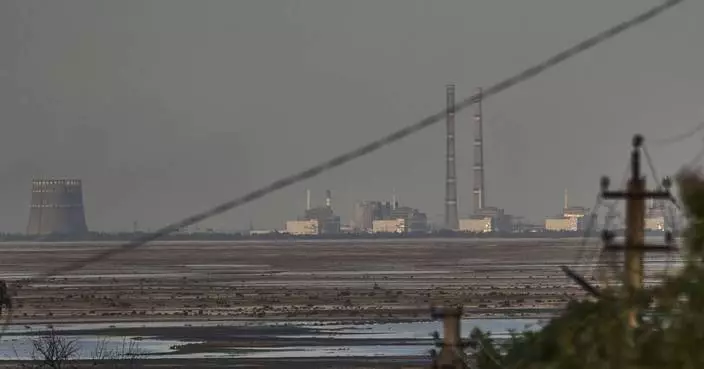
IAEA warns that attacks on a nuclear plant in Russian-controlled Ukraine put the world at risk
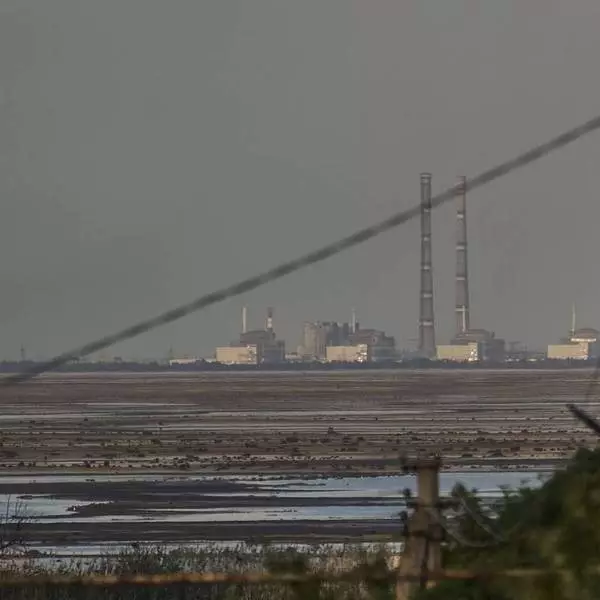
IAEA warns that attacks on a nuclear plant in Russian-controlled Ukraine put the world at risk








